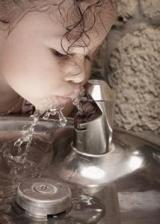News Releases from Region 07
EPA Awards Kansas $472,000 to Test for Lead in School Drinking Water
Environmental News
FOR IMMEDIATE RELEASE
(Lenexa, Kan., April 8, 2020) - Today, the U.S. Environmental Protection Agency (EPA) Region 7 announced $472,000 in grant funding for the Kansas Department of Health and Environment to help schools and child care programs in Kansas test for lead within their drinking water systems.
“Knowing that no blood lead level is safe for our children, EPA is committed to continuing a collaborative approach with our state partners to address the threat of lead exposure and protect the health of our nation’s most vulnerable,” said EPA Region 7 Administrator Jim Gulliford. “With the support of these grants, we’re able to help more schools and child care programs test for lead in their drinking water to ensure children are not being exposed by the water they drink while in their care.”
Under EPA’s new Voluntary Lead Testing in Schools and Child Care grant program, EPA has awarded $43.7 million in grants toward funding the implementation of testing for lead in drinking water. This funding is a resource, which creates or expands programs to test for lead in drinking water at schools and child care programs in states and the District of Columbia.
EPA’s 3Ts (Training, Testing, and Taking Action) for Reducing Lead in Drinking Water in Schools will be used by the grantees to assist schools in implementing lead in drinking water testing, including identifying sources of lead such as fountains.
Testing results carried out using grant funds must be made publicly available.
Background
In December 2018, EPA with its federal partners announced the Federal Action Plan to Reduce Childhood Lead Exposures and Associated Health Impacts. Through the Action Plan, EPA is working to reduce lead exposures from multiple sources including paint, ambient air, and soil and dust contamination. As part of the Action Plan, EPA proposed a rule in October 2019 that significantly improves the actions that water systems must take to reduce lead in the nation’s drinking water. This proposed rule represents the first major overhaul of the Lead and Copper Rule since 1991, and will better protect children in schools and child care facilities by requiring water systems to take drinking water samples from the schools and child care facilities served by the system.
In addition, the Agency is taking other significant actions to modernize aging water infrastructure and reduce exposure to lead, including:
- Financing drinking water infrastructure improvement projects through EPA’s Water Infrastructure Finance and Innovation Act (WIFIA) program. In 2019, 11 of the 38 selected projects will reduce lead or emerging drinking water contaminants.
- Working with states, tribes and territories to award $87 million in funding through EPA’s two new drinking water grant programs established by the Water Infrastructure Improvements for the Nation Act (WIIN) – the Voluntary Lead Testing in Schools and Child Care grant program and the Assistance for Small and Disadvantaged Communities grant program. EPA will announce funding details for WIIN’s third, newly-created grant program dedicated to reducing lead in drinking water systems in early 2020.
- Providing more than $1 billion in 2019 in new federal grant funding for the Drinking Water State Revolving Fund (DWSRF), which can be used for loans that help drinking water systems improve distribution systems by removing lead service lines.
# # #
Learn more about this grant and EPA’s WIIN grant programs
Learn more about EPA Region 7
View all Region 7 news releases
Connect with EPA Region 7 on Facebook: www.facebook.com/eparegion7
Follow us on Twitter: @EPARegion7

